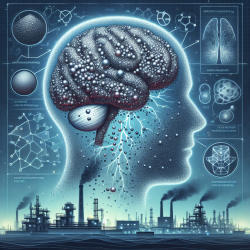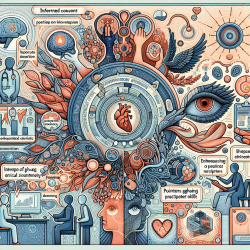Introduction to Functional Near-Infrared Spectroscopy in Pediatric Research
Functional near-infrared spectroscopy (fNIRS) has emerged as a promising tool in pediatric clinical research, offering a non-invasive method to study brain function in infants and young children. With its ease of application and portability, fNIRS provides a valuable option for studying neurological, behavioral, and cognitive impairments in young individuals. This blog explores the potential of fNIRS in pediatric clinical research, particularly in the areas of epilepsy, language disorders, and attention-deficit/hyperactivity disorder (ADHD).
Epilepsy and fNIRS
Epilepsy is one of the most common neurological disorders in children, characterized by recurrent seizures. fNIRS has been used to study the hemodynamic changes associated with epileptic activity, providing insights into the pathophysiology of epilepsy. By combining fNIRS with electroencephalography (EEG), researchers can monitor the neurovascular unit's response to interictal spikes and seizures. This multimodal approach enhances our understanding of epilepsy and may improve the management of epileptic children, particularly in cases of refractory epilepsy that require surgical intervention.
Language Disorders and fNIRS
Language and communication disorders can significantly impact a child's cognitive development. fNIRS has been employed to study various aspects of language processing in children, including the effects of cochlear implants and the neural basis of stuttering. The technique's non-invasive nature and ability to measure brain activity in naturalistic settings make it ideal for studying language development in infants and young children. Recent studies have highlighted fNIRS's potential to predict language outcomes in children with cochlear implants and to distinguish between children who stutter and those who do not.
ADHD and fNIRS
ADHD is a prevalent neurodevelopmental disorder characterized by inattention, hyperactivity, and impulsivity. fNIRS has been used to investigate the neural underpinnings of ADHD, revealing consistent hypoactivity in the right lateral prefrontal cortex during cognitive tasks. Additionally, fNIRS has been applied to assess the impact of pharmaceutical interventions and to explore neurofeedback as a potential treatment for ADHD. The technique's ability to provide real-time feedback on brain activity offers a promising avenue for developing personalized treatment strategies for children with ADHD.
Challenges and Future Perspectives
While fNIRS holds great promise for advancing pediatric clinical research, several challenges remain. These include the need for standardized protocols, larger sample sizes, and the development of normative data. Additionally, the integration of fNIRS with other neuroimaging modalities, such as EEG, could enhance its diagnostic and prognostic capabilities. As research progresses, fNIRS may become a valuable tool for improving the diagnosis and treatment of neurodevelopmental disorders in children.
To read the original research paper, please follow this link: Functional near-infrared spectroscopy in pediatric clinical research: Different pathophysiologies and promising clinical applications.










